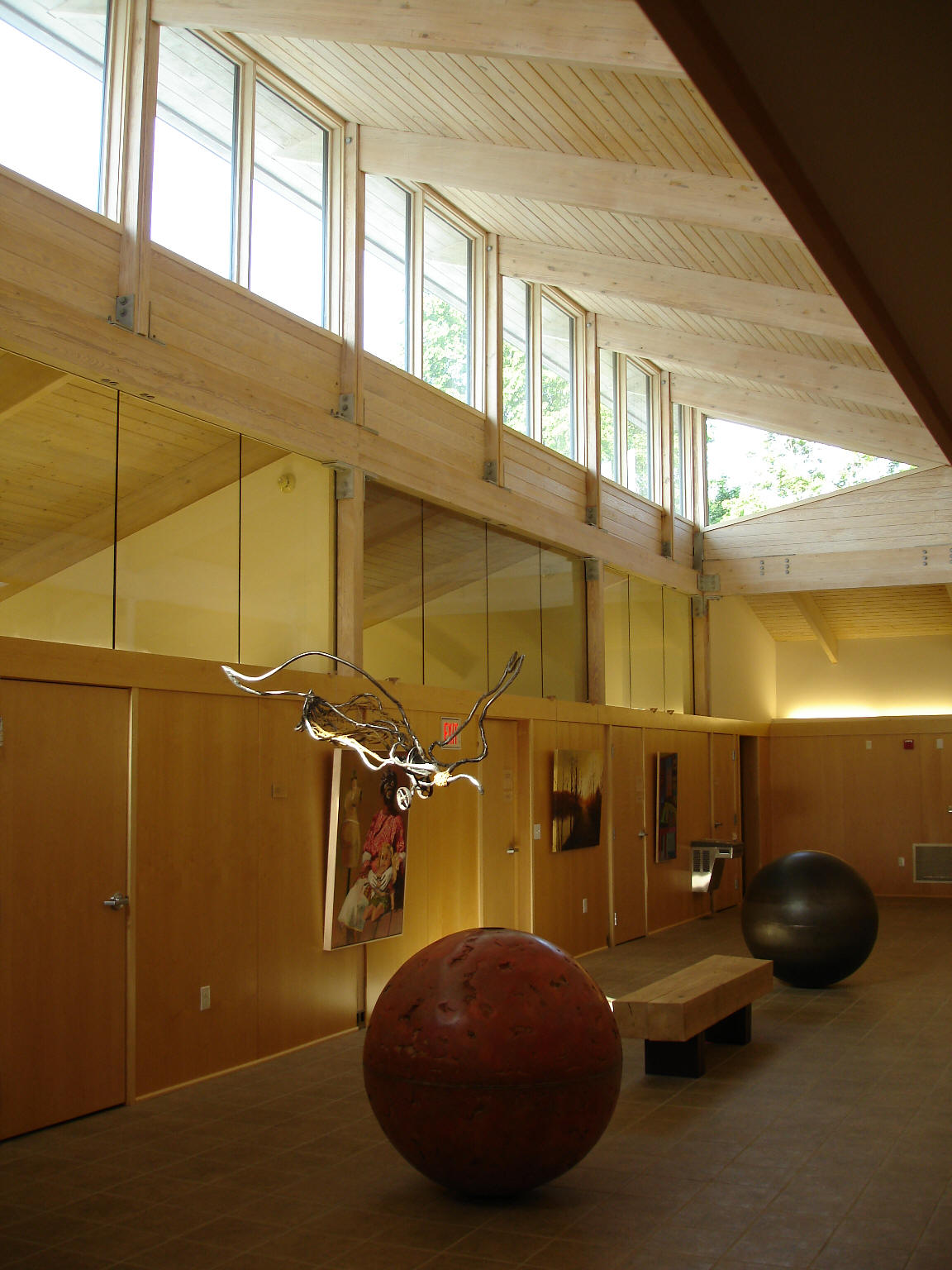
629 Oberlin Road
On a recent Sunday morning, Frank Harmon sat down at his computer to check his email. He was initially delighted to see a message from a cherished friend and renowned former client, Dr. Lucy Daniels, psychoanalytic psychologist, philanthropist, founder of the Lucy Daniels Center for Early Childhood and the Lucy Daniels Foundation, Guggenheim Fellowship recipient, and the author of best-selling books including her seminal memoir, With a Woman’s Voice: A Writer’s Struggle For Emotional Freedom.
He was happy to hear from her, but his heart sank at the subject line: “Selling our beautiful building.”
In her email, he learned that the building he designed in 1997 at 629 Oberlin Road, Raleigh, for her psychology practice was to be sold in a matter of days.
In her late 80s now, Dr. Daniels said she knew it was “the right thing to do” but “doing this breaks my heart.” The purpose for her note that morning, she wrote, was “to tell you even stronger than ever before how much I’ve appreciated this building and loved seeing patients and conducting seminars in it.”
Towards a Gentle Modernism
Working closely with his esteemed client and his wife, the late landscape architect Judy Harmon, Frank tailored the modern, low-slung structure to sit quietly within Raleigh’s Cameron Village neighborhood. Its tan brick exterior was softened by Judy’s lush landscaping that she planned to make sure something was in bloom year-round.

Inside the central circulation space/art gallery.
The interior is organized around a spacious central circulation area filled with natural light from a large central skylight. The space doubled as an art gallery for Dr. Daniels’ extensive art collection.
The doctors’ offices and patient rooms face each other across the gallery, yet each of the latter has its own private exit so patients don’t have to go back through the gallery to leave. All rooms also feature interior transoms so that sunshine from the skylight penetrates into them as well. All artificial lighting is indirect in coves so that the interior is filled with a gentle glow at night and on cloudy days. And the nature of the building’s all-wood construction is clearly expressed: Every truss, joint, and bolt is visible and, in most cases, touchable.
On many levels, Dr. Daniels’ building is a metaphor for her practice. It interacts with its site and surroundings as gently as psychologists interact with their patients. It rises among the trees and, with the central skylight, glows like a lighthouse in the same sense that psychologists are a beacon of hope to their patients. And its construction is as accessible – as clear and honest – as therapists are with those for whom they care.
On this Sunday morning, Frank remembered fondly the collaboration he enjoyed with this special client and the inspiration he derived from her. He also remembered the many years of pleasure it gave him to watch his friend’s practice flourish within it.
In his response to Dr. Daniels’ email that Sunday morning, Frank told her he shared her sense of loss, then noted, “Designing your building and watching you use it was like having a child and watching her grow into an adult.” And he added: “Frank Lloyd Wright said that a good building starts with a good client. In you, I had a great client. Thank you for all you did for so many people in a building and landscape we both loved.”


 Frank Harmon Architect
Frank Harmon Architect